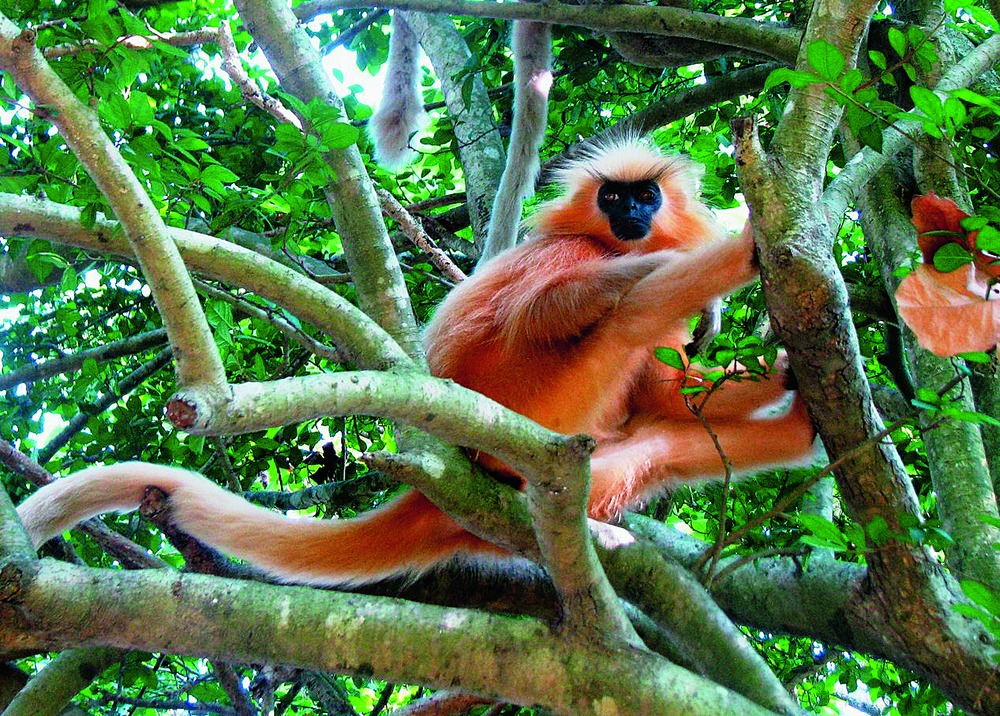
Guwahati, Aug. 31: The golden langur ( Trachypithecus geei), characterised by its striking golden orange pelage and found only in Assam and Bhutan, has now been listed in the "world's 25 most-endangered primates".
This announcement was made at the joint meeting of the International Primatological Society and the American Society of Primatologists held from August 21 to 27 in Chicago.
The meeting was held under the chairmanship of Russell A. Mittermeier (Chair, International Union for Conservation of Nature Species Survival Commission Primate Specialist Group).
Golden langur is an endangered primate, endemic to the semi-evergreen and mixed-deciduous forests along India-Bhutan border. It was found in 1953 by naturalist E.P. Gee.
It has already been listed as an endangered species in the IUCN Red List and is in the Schedule-I species of the Wildlife Protection Act (1972).
Dilip Chetry, head of the Primate Research and Conservation division of Aaranyak, an NGO, who attended the conference told The Telegraph that it has been placed on this list due to extensive habitat fragmentation, habitat destruction and encroachment along its distribution range which have led to rapid population decline.
Their population is now estimated to be around 7,000 in Assam with the majority being found in Chirang, Manas and Ripu reserve forests and the western part of Manas National Park. The rest are found in several small isolated fragments.
In India, their distribution is confined between the rivers Manas in the east, Sankosh in the west, Brahmaputra in the south and extends over 2,500 square km. Now, it has been reduced to 1,400 square km. In Bhutan, their distribution is equally restricted and they are found in central Bhutan ranging between the Sankosh and the Chamkhar-Mange-Manas river complex.
"As it has now been listed in the most-endangered list of the world, the golden langur can now be used as a 'flagship species' for the conservation of biodiversity of this region. It is now in the hands of the state government to act positively to ensure the future of golden langur in Assam. To give a new dimension to the conservation of golden langurs in particular and other wildlife in general, the government can declare 'Ripu-Chirang wildlife sanctuary' with 590 square km in the Manas tiger reserve and Kakoijana wildlife sanctuary (17 sq km) near Bongaigaon, and also can bring other areas under the protected area network," Chetry said.
According to him, there has to be more focus now on education and awareness, habitat conservation of golden langurs, connecting the different forest fragments by forest corridors, habitat restorations, community participation and trans-boundary conservation issues with Bhutan.
He said political will and public support are needed to achieve the goal of conservation.










